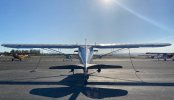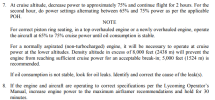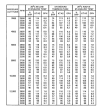Hi All--new member here:
I recently purchased a 1940 Luscombe 8A with less than 100 hrs. SMOH, but the overhaul was way back in 2012(!!). The plane flies great, but we've been dealing with oil fouling and sometimes oil leaking from the airbox below the carb. after shutdown. Here are the facts:
1. It seems to be using about a quart/6 hrs.
2. The engine has Millennium cylinders and my IA suspected premature wear in the valve guides, so we pulled the cylinders for inspection. Stem-to-bore clearances are at half the wear limit or less (averaging .0026").
3. Compression test results: 75/80, 75/80, 77/80, 78/80.
4. Crankcase breather is clear.
5. Oil pressure is normal/healthy.
6. Four of the old Champion plugs failed a resistance test, so they will be replaced with Tempest UREM37BYs, which should help with the oil fouling, but won't solve the oil leak problem.
I understand that this is not an uncommon issue with small Continentals, but the oil leaking/fouling/consumption seems excessive for the condition of the engine. I'd love to hear any explanations, theories, or shared experiences other members might have. Cheers, JD

I recently purchased a 1940 Luscombe 8A with less than 100 hrs. SMOH, but the overhaul was way back in 2012(!!). The plane flies great, but we've been dealing with oil fouling and sometimes oil leaking from the airbox below the carb. after shutdown. Here are the facts:
1. It seems to be using about a quart/6 hrs.
2. The engine has Millennium cylinders and my IA suspected premature wear in the valve guides, so we pulled the cylinders for inspection. Stem-to-bore clearances are at half the wear limit or less (averaging .0026").
3. Compression test results: 75/80, 75/80, 77/80, 78/80.
4. Crankcase breather is clear.
5. Oil pressure is normal/healthy.
6. Four of the old Champion plugs failed a resistance test, so they will be replaced with Tempest UREM37BYs, which should help with the oil fouling, but won't solve the oil leak problem.
I understand that this is not an uncommon issue with small Continentals, but the oil leaking/fouling/consumption seems excessive for the condition of the engine. I'd love to hear any explanations, theories, or shared experiences other members might have. Cheers, JD



